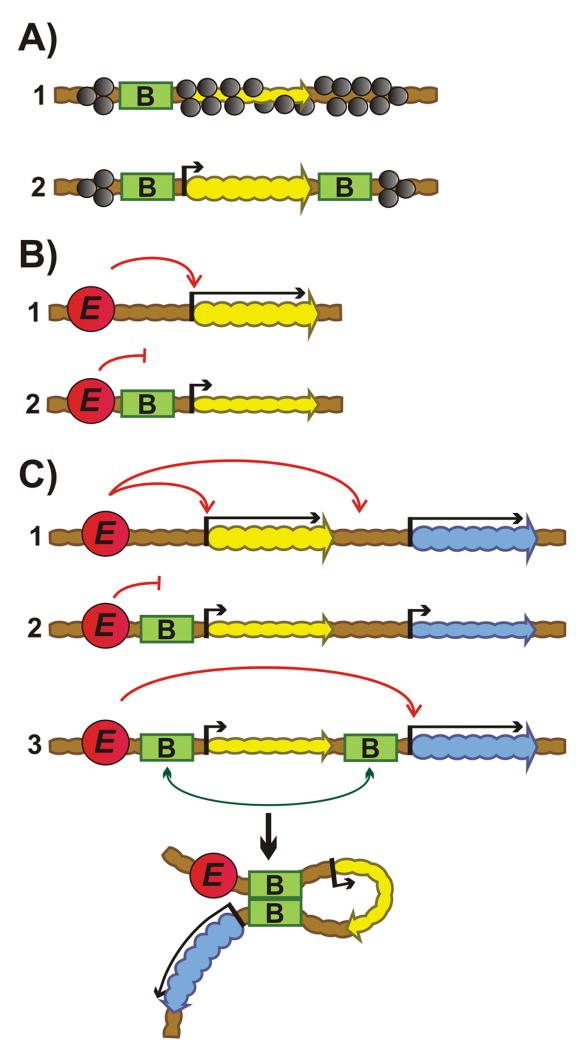Figure 1.
Transgene assays for boundaries. A: Insulator assay. (1) One boundary is not effective in protecting repaorter transcription from heterochromatic/Polycomb repression. (2) Two boundaries flanking reporter on both sides protect against silencing. Green rectangles “B” – boundaries. The yellow and blue wavy arrows indicate genes; upstream arrow indicates promoter: short – isolated from enhancer; long – activated by enhancer. Absence of an arrow upstream of the gene in (1) indicates gene repression by heterochromatin/Polycomb. Heterochromatin/Polycomb factors– gray ovals. B: Enhancer-blocking assay. (1) Enhancer activates promoter. (2) Boundary inserted between enhancer and promoter blocks enhancer action. Red circle “E” – enhancer. C: The bypass assay. (1) Two reporters are regulated by an upstream enhancer. (2) Placing a boundary between the upstream enhancer and the promoter for the proximal reporter blocks activation of both reporters. (3) Addition of second boundary in between the two reporters leads to bypass. The two boundaries pair with each other and this brings the enhancers in close proximity to the distal reporter leading to its activation.

